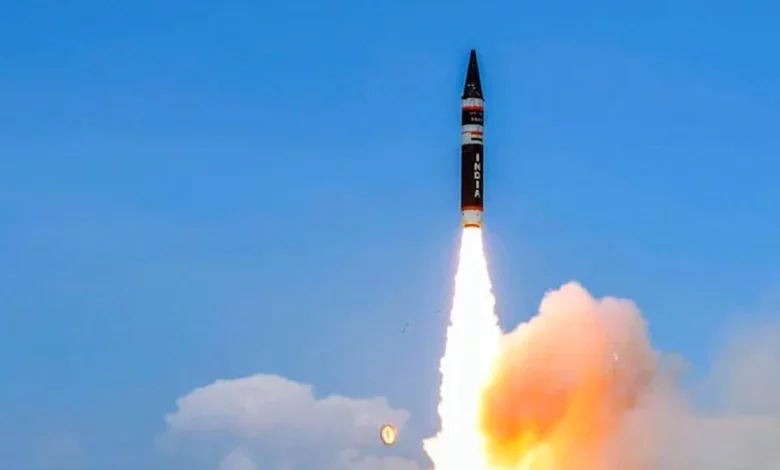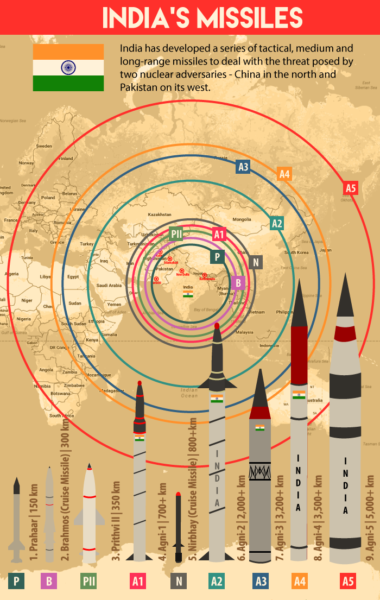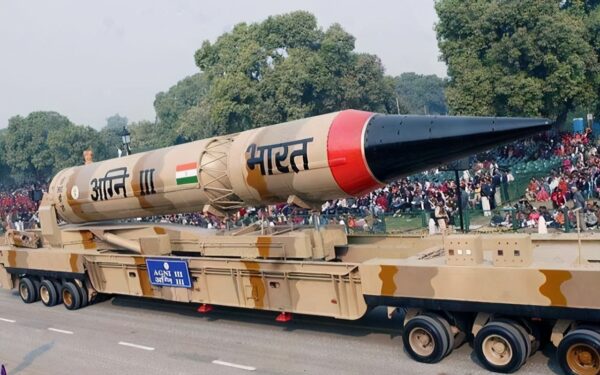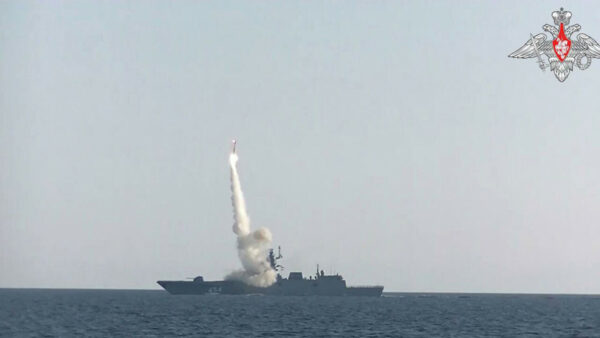
The DRDO successfully tested the Agni Prime missile, carrying nuclear weapons
Agni Prime Missile Information-
Agni-P or Agni-Prime (Agn “Fire”) is a medium-range ballistic missile developed by the Defence Research and Development Organisation as a successor to the Agni-I and Agni-II missile operational service with Strategic Forces Command. It features a lot of improvements, like a composite motor casing, manoeuvrable reentry vehicle, improved fuels, navigation, and guidance systems.
It is the sixth ballistic missile in the Agni (missile) series. Agni Prime can be kept in a canister or transported by train.
DRDO has been developing a successor to Agni-I named Agni-1P with two stages that borrow modern technologies from Agni-IV and Agni-V to provide accuracy and reliability since 2016, according to several media outlets. After China built the DF-21D and DF-26B with nuclear capabilities to face the US Navy, India developed area-denial weapons, bringing Naval Base Guam closer.
As a counterpoint, India’s Indo-Pacific policy included Agni-progress P’s to oppose China’s intention to have five or six battle groups of aircraft carriers covering both the Pacific and Indian Oceans by 2035, with access to potential foreign logistical facilities like the one in Djibouti. In terms of A2/AD, India can up demand, according to the Chinese military. The Agni-P test further raises India’s joining the Intermediate-Range Nuclear Forces Treaty.

On June 28, 2021, the DRDO successfully test-launched Agni-P, which carried two multiple independently targetable reentry vehicles from Abdul Kalam Island (MIRV). This three-stage solid-fuel missile with a movable reentry vehicle (MaRV) delivered the warheads to two different places. The rocket is transported by road and rail in a hermetically sealed twin canister launcher, and it fires in salvo mode and uses a cold launch mechanism. MIRV and MaRV technology were already in stages of development for Agni-VI in 2013, according to V. K. Saraswat.
The second successful test was conducted off the coast of Odisha at Balasore on December 18, 2021.
The MaRV has four delta fins to circumvent missile defence systems for the final part of the flight. It is a new Agni missile type that is half the weight of the Agni-III. Agni-first P’s and second stages are made of composite material, which was developed during the Agni-V project for the aim of weight reduction. The missile has a progressive direction and propulsion system and can go a maximum distance of 2000 kilometres with a payload of 1.5 tonnes.
Agni-P, according to observers, is primarily designed to fight Pakistani forces because its range is insufficient to reach China.
Many people speculated that after induction, Agni-P would replace Prithvi-I, Agni-I, and Agni-II; government sources refuted this. The DRDO is intended to create a “carrier killer” missile based on this missile.
One of its development goals is to achieve maximum manoeuvrability against missile defence systems.
The latest nuclear-capable Agni Prime missile has been successfully tested-
The new-generation nuclear-capable ballistic missile Agni Prime was successfully tested by the Defence Research and Development Organisation (DRDO) off the coast of Odisha on Saturday. After a test in June, the second time the surface-to-surface missile has been tested this year.
Radar, electro-optical stations, and downrange ships located along the eastern coast witnessed and monitored the missile’s route and parameters. The rocket “followed a textbook trajectory,” according to the report.
Agni Prime is the Agni missile family’s next-generation improved version, ranging from 1,000 to 2,000 kilometres.
According to the release, the missile is a “two-stage solid propellant in a canister ballistic missile with dual redundant navigation and guidance system,” and the “second flight-test has displayed the reliable performance of all the technologies integrated into the system.”

Defence Minister Rajnath Singh congratulated the DRDO on the experiment.
“At 11:06 a.m., the DRDO conducted a test. Telemetry, radar, electro-optical stations, and downrange ships along the eastern coast recorded and monitored missile trajectory and characteristics. According to the DRDO, the missile flew on a textbook trajectory, and all goals have been met with utmost accuracy.
The ballistic missile is half the Agni 3 and can be launched from a train or road. It is stored for long periods and then transferred.
According to the defence, the government successfully test-fired the air variant of the BrahMos supersonic cruise missile on December 7, marking a “milestone” in BrahMos development.
The missile was successfully test-fired from an Indian Air Force (IAF) Sukhoi 30 MKI supersonic fighter aircraft at the Integrated Test Range (ITR) in Chandipur, off the coast of Odisha, according to the ministry.
Around the same time, the Integrated Test Range (ITR) in Chandipur successfully test-fired the Vertically Launched Short Range Surface to Air Missile (VL-SRSAM).

Defence Research and Development Organisation (DRDO), the air defence system can engage targets at 15 kilometres. ACCORDING TO THE ORGANISATION, the VL-SRSAM, which was planned and developed for the Indian Navy by the DRDO, is intended to neutralise various aircraft threats at close ranges, including sea-skimming targets.
Dr G Satheesh Reddy, the chairman of the DRDO, praised the agency’s achievements in the missile’s second flight test.






